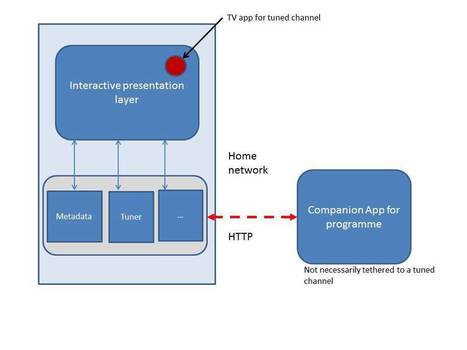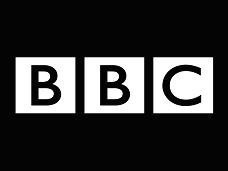 Your new post is loading...
 Your new post is loading...
Adobe, NBCU, Elemental, Deltatre, LiveU, and more are readying streaming platforms that will deliver coverage to desktops and mobile devices around the globe.
Four years ago according to the IOC there was a defining moment in Olympic broadcasting history. Vancouver was the first Winter Games to be fully embraced on digital media platforms where digital coverage accounted for around half of the overall broadcast output.
Globally, on official rights-holding broadcasters’ internet and mobile platforms, there were more than 265 million video views and in excess of 1.2 billion page views during the games. There were also approximately 6,000 hours of 2010 coverage on mobile phone platforms.
Digital coverage from Sochi will surpass this, with many more broadcasters drawing on the clear consumer demand from London 2012 for any time, any device viewing.
The IOC places such draconian restraints on rights holders and anyone working for them to report involvement in the Olympics, which extends to technology contractors, that it's tricky to unearth details on this story. With that caveat, here are some of the large-scale video streaming activities set to go live from Sochi at the end of this week.
It's been a long time since the last series of blogs on Orchestrated Media. Time for a catch-up. Firstly, we've stopped using the term orchestrated media, and instead talk about dual-screen and companionscreen. Dual-screen reflects where things stand currently: the companion service can synchronise against the broadcast content using various technologies. See Steve's blog about that. The BBC's launch of dual screen for Antiques Roadshow is imminent. Looking ahead, we see the next generation of services allowing a wider set of companion services, where the TV, the companion, and the Web, are inter-communicating, allowing a web site or a companion app to both monitor and control the TV. This gives TV -awareness on web-sites, and web-awareness of TV services. Each of these three domains could be the launch-point for companion screen services, and enage the other two domains as needed. Companion screen pertains to this wider role for the companion device, compared to today.
The BBC is going to use companion screen apps to enhance the enjoyment of programmes but also introduce audiences to what can often be a wealth of programme related information and interactivity online. The broadcaster will launch its first companion screen app this September in the form of a play-along game for Antiques Roadshow, a gentle Sunday night affair where the public bring family treasures for experts to analyse and value. The BBC is harnessing the fact that most viewers already try to second-guess the experts with their own valuations. You will be able to play the game whether you are watching live or on-demand. Victoria Jaye, Head of IPTV & TV Online Content at the BBC, used Connected TV Summit last week to make the announcement but also outline the general companion app strategy for the broadcaster. She views show-related companion activities on smartphones, tablets and even the PC as a way to explore new creative opportunities. She made it clear that ownership of the app, in terms of the content and viewer experience, will belong to the production teams and that this is considered crucial. The production department will drive the format, while the technology development team will realise their vision.
Last week, we looked at the background around Orchestrated media (OM), and bringing you up to date with work that R&D has been doing on these lines. Here we look at how OM may enhance the experiences around various programme genres. As you can imagine, this extends well beyond technology considerations ... The OM team looks at technology and enablers required to create OM experiences, and discusses with colleagues beyond R&D about possible editorial propositions, and considers the future technology landscape and market activities and how it may affect OM.
How does it work? Orchestration employs synchronisation between the TV (radio) and companion devices (typically mobile, such as smartphones, tablets, laptops). Synchronisation ranges from continuous (such as following a broadcast game) to one-shot (here's some Web content about this show). Two different modes of synchronisation are used. Asymmetric synchronisation causes the companion content to sync to the TV (radio) content. Symmetric synchronisation supports this, but also the TV sync'ing its content (catch-up, VoD) to the companion content. Dual-screen orchestration employs asymmetric synchronisation either based on audio watermarking or on IP-delivered events. My colleague Steve Jolly is shortly blogging about technical aspects we contributed to this pilot. In fact, we've been doing so much work around Orchestrated Media, Steve and I are going to need to blog about it in a few separate posts. Today's post will look at some of the background to our thinking, how media is orchestrated and our work to date.
|
The BBC has called for technology standardisation for second screen services in order to help move the the broadcast sector forwards. Speaking at TV Connect yesterday, BBC senior technologist for mobile and dual screen, Jeremy Kramskoy, said that common standards were important in terms of bringing down development and technology licensing costs. He also said that in the future connected home, when synchronisation will increasingly result in different web-powered devices talking to each other, “standardisation has to happen, otherwise it’s going to be a complete nightmare.”
Since 1999, the BBC's Red Button feature has delivered alternative camera angles, sports scores and the like over broadcast spectrum, but it's now set to become internet enabled. Channel surfers shouldn't expect a full-blown web experience, however, as the Beebs stresses it's not about to include everything and the kitchen sink in terms of functionality. Rather, their Connected Red Button aims for simplicity. Punching the clicker could bring up the iPlayer to catch previous episodes of shows or save recipes from a cooking program for later viewing on a computer or smartphone. Companion screen experiences such as the Antiques Roadshow app, which is slated for a September release, are also part of their web-connected roadmap.
Our editorial approach to companion experiences is three fold: • Build on existing audience needs and behaviour • Go beyond broadcast • Drive creative renewal and innovation We want to immerse our audience in the programme they're watching even more by building on the existing needs and behaviours the show inspires. We've learned a lot about this from years of programme-related experimentation on BBC Red Button and BBC Online.
In that earlier blog post, I mention that technologies exist that are already being used to synchronise media on mobile devices to television programmes, such as audio fingerprinting and watermarking, video fingerprinting and watermarking and delivering synchronisation information via the Internet. The advantage of all these solutions is that they require no modifications to the set-top box or television. A common disadvantage is that content on other devices can only follow what happens on the television, and not vice-versa. In the longer term, we believe that a technology like Universal Control offers very significant advantages in this regard, but we recently took advantage of an opportunity to work with colleagues from across the BBC to investigate some of these existing methods of synchronisation, to see what kinds of "dual screen" experience might be possible today. Our most significant contribution to the work has been an API to permit the developers of dual-screen applications to ignore the details of specific synchronisation technologies. It provides a standard interface, behind which any number of information sources may be working (individually or together) to provide the application with information about what programme the user is watching (if any), and what events are occurring in it that might trigger synchronised behaviour. This approach helps the BBC avoid getting locked into using the technology of a specific supplier, and helps "future-proof" applications: as new synchronisation technologies become available, little or no extra effort is likely to be required for existing applications to be able to make use of them. (Of course, one of the sources of information could be a Universal Control server on the set-top box...)
While many people already play around with their mobile phones or tablets while watching TV, perhaps following discussion about the show on Twitter, the BBC is doing some fascinating R&D work which could help mobile devices become more useful ‘second screens’ for television. The Orchestrated Media project is working to display relevant, supporting content for the show you’re watching, in sync with the show. So, a documentary on dinosaurs may display information about the beasts currently depicted on screen, or a news broadcast could display detailed information about the current story without you having to look for it. The BBC’s Jerry Kramskoy has told us a little more about the technology behind Orchestrated Media: “Audio watermarking works by striping the audio in the content, which is broadcast. The companion device listens out for this to sync up. So this is a one-way flow of sync … the TV is the master, the companion the slave … always. This means the companion cannot control the TV. “To make the TV content follow the companion device content, as in the Autumnwatch video on my blog, requires s/w in the TV that the companion talks to, to allow the companion to be the master when it wants. This latter scenario is whate we refer to as symmetric sync, and the TV and companion are in a peer-to-peer relationship, whereas the previous one-way sync we refer to as asymmetric sync, where the TV and companion are in a mster-slave relationship. Standardisation is necessary around what and how features are exposed by the TV to support symmetric sync”
|



 Your new post is loading...
Your new post is loading...
















